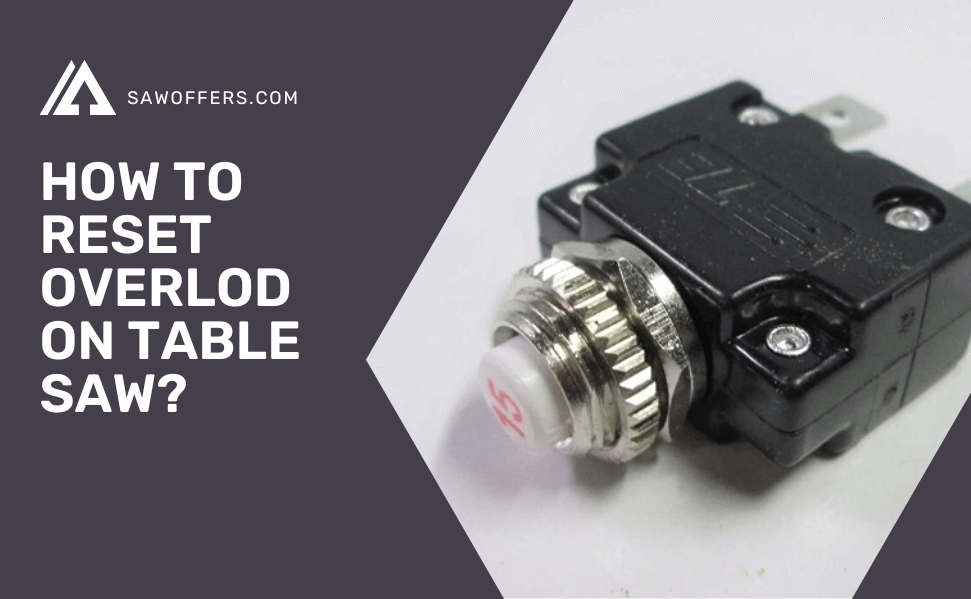Table of Contents
If your table saw keeps shutting down, this article will teach you how to reset overload on table saw. Before attempting to reset the overload, check for a loose cord or damaged outlet. If you’re unsure of its cause, it could be due to a bad motor, a broken power cord, or a damaged switch. Fortunately, this guide will help you get back up and running quickly.
Resetting Overload on Table Saw
A table saw overload switch is a vital safety feature. When the saw trips, it should be reset to prevent the machine from accidentally triggering an overload. It is possible to reset the overload by pressing the reset switch on the motor overload. This way, you can easily reset overload on a table saw.
A table saw is not starting may be due to a bad power cord or a defective on/off switch. It may also be due to a bad motor overload. Before attempting to reset the overload, check whether the power cord is intact and the electrical outlet is functional. If it is, try plugging it into a different outlet. If it still does not work, you may need to replace the power cord.
If your table saw is not starting after resetting the overload switch, the power cord may be loose, or a breaker may have tripped. You need to check the thermal overload switch if the red reset button does not restore normal operation. If the thermal overload is tripped, the saw is overworking, possibly due to a dull blade or pushing the wood too fast.
Here are some ways to combat this problem:
Repairing a table saw
If you’re having trouble cutting on your table saw, you may need to learn how to reset overload on the table saw. If you’re unable to reset the overload switch, you’re likely not using the proper blade for the speed. In such cases, you can remove and replace the trigger with another one. This should work for most cases, but in the rare case that the trigger has stuck, you may need to replace the whole unit.
If you’ve tried resetting the overload switch, your saw may still be unable to start. The problem could be with the electrical outlet or the overload switch. Another problem could be that the trigger on your saw has broken. Try plugging it into a different outlet to see if it will start. If that doesn’t fix the problem, you may need to replace the thermal overload.
Checking for a loose cord
If you notice that your table saw is not operating properly, it is important to check its power cord. A loose cord could be causing the problem. Also, if the red reset on the motor does not come back on, you may have a tripped breaker. If this does not work, the thermal overload switch may have tripped. Overworking your saw can cause it to trip the switch. Pushing the wood too quickly or a dull blade can cause it to be overworked.
Oftentimes, a loose cord can lead to an overloaded saw. If this happens, you should unplug the table saw from the outlet and retry using it. You may also have a damaged blade. In either case, you should replace it as soon as possible. If the problem persists, you may have a faulty or misaligned blade. Once the blade is replaced, check for a loose cord and recheck your switch.
Checking for an overload switch
If you’ve noticed your table saw isn’t cutting smoothly or stalling, you may be looking for an overload switch.
Checking for a damaged blade
If you’ve reset the overload switch on your table saw, but the saw still won’t start, it’s probably because the blade has become damaged. Check the trigger and ensure the lock-off button is not in the “ON” position. If the trigger is stuck, inexperience and the material may be an issue. If this is the case, stop forcing the stock through the cut and switch to a slower blade speed to create more torque. If you haven’t done this before, ensure you’re careful and don’t damage the blade or saw.
Checking for an overheating motor
There are several signs that your table saw’s motor may be overheating. The motor can experience a weak start when you turn it on. If the starting capacitor is damaged, it may lead to the failure of other motor parts. Likewise, overheating can damage the windings, which ultimately means the motor needs replacement. Luckily, there are ways to identify and fix the problem.
During normal operation, the motor may run without overheating. The problem may be with the arbor bearing or pulley alignment. Checking the belts and bearings will determine if they are warm or cool. Taking the table saw off will allow you to check them out and replace them if necessary. If you notice that the blade is warmed up, the problem may be with the arbor bearing or pulley alignment.
Conclusion:
Overloading your table saw motor is a common problem for many users. If you notice it happening more often than usual, there may be a few causes. The most common causes are bad drive motors, worn or damaged blades, and worn motor brushes. It can be reset using the overload button easily. After doing so, you can continue your work!

